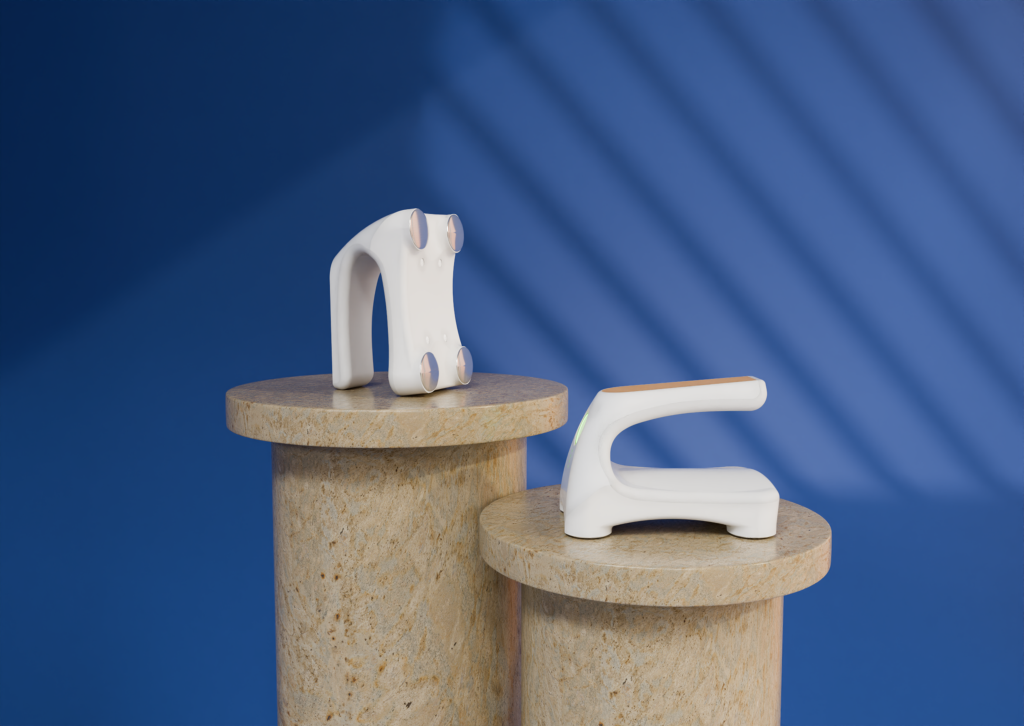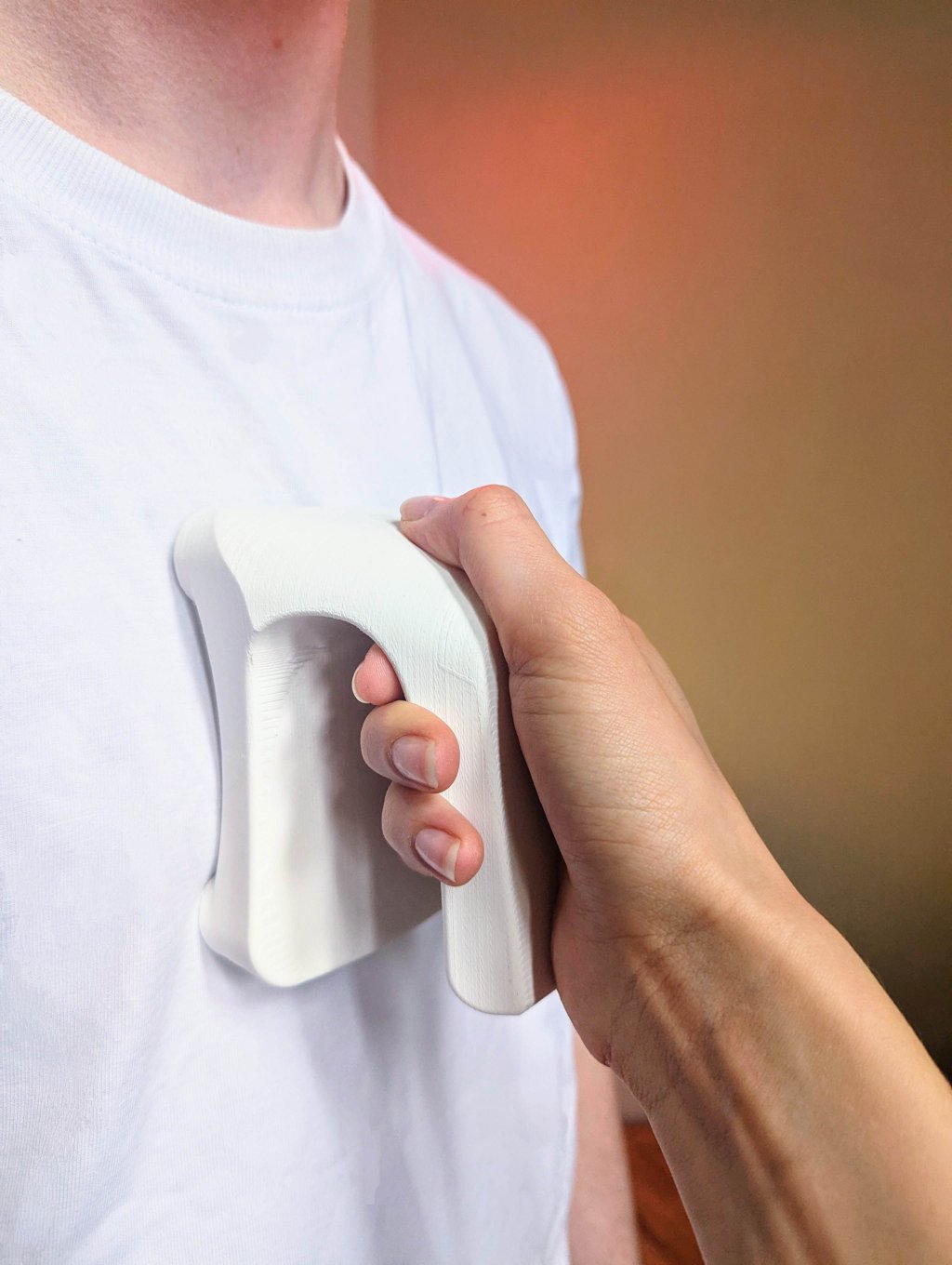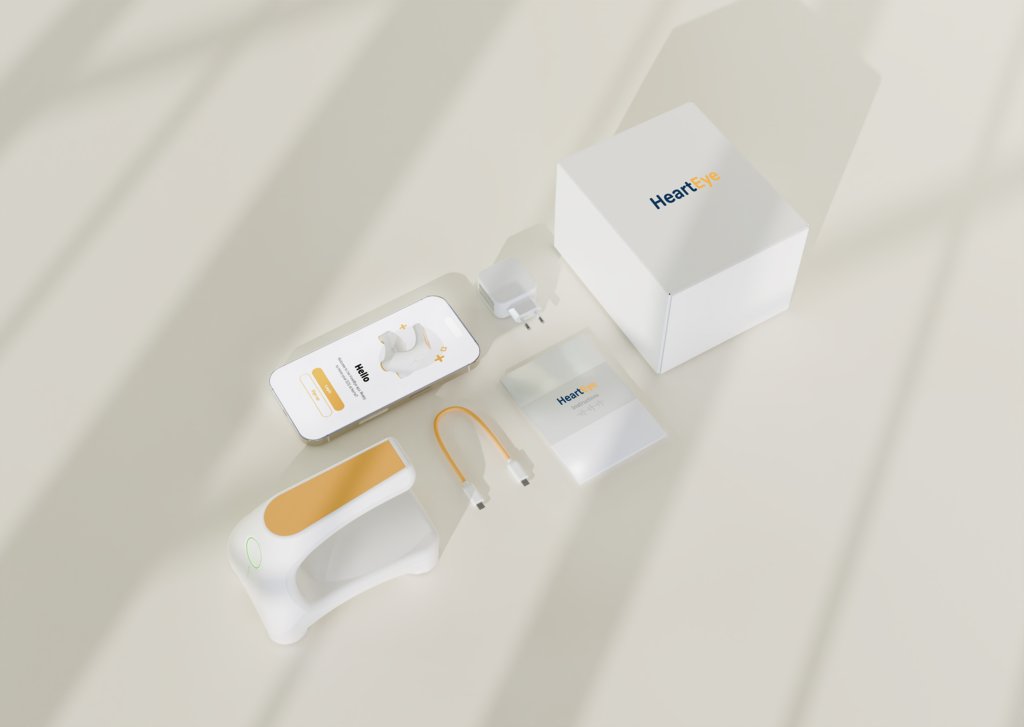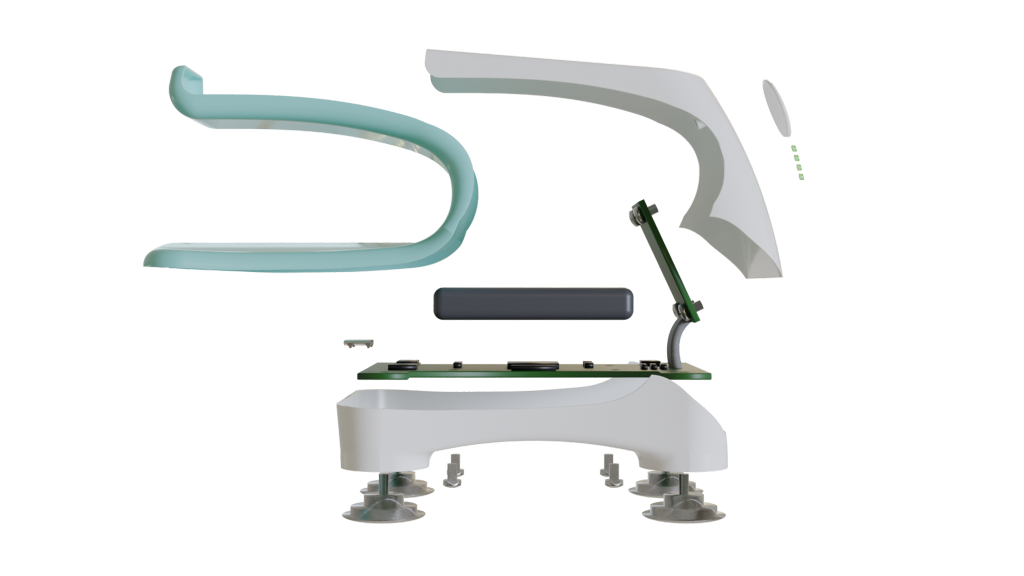Redesign of the HeartEye Portable ECG Device for Home Use
Lucas Habets, Prof. dr. ir. Jan-Carel Diehl, Prof. dr. ir. Maaike Kleinsmann, Tjebbe Tauber, Heleen Willemsen
Cardiovascular diseases are the leading global cause of death, with coronary artery disease (CAD) accounting for a third of deaths in individuals aged over 35 in the United States. While electrocardiography (ECG) has been a crucial diagnostic tool for over a century, traditional 12-lead ECG systems are confined to hospitals due to their size, cost, and complexity. This limits frequent ECGs, which have been shown to greatly reduce mortality. HeartEye has developed technology to create clinical-grade 12-lead ECGs in a compact form. However, the current design is limited for use by medical professionals in hospitals. The challenge for this project was to redesign the HeartEye device for home use, increasing its accessibility for, often elderly, patients managing CAD by themselves in their own homes.

The new design of the HeartEye ECG device integrates four dry stainless steel electrodes on the bottom, which the patient places on their chest to capture the heart's electrical signals. By allowing for various grips and hand sizes, the housing is ergonomically optimized for self-measurement while also being suitable for caregivers assisting in the process. Once ready, the user presses the button and HeartEye records for 45 seconds, converting the signals into a standard ECG report for analysis by doctors or potentially in the future, AI algorithms.
The design considers not just the physical device, but the entire ecosystem of care, including the integration with telemonitoring centres and healthcare systems. At its core, the project prioritized user-centred research, including interviews with heart patients and AI-assisted analysis of over 100,000 heart patient forum posts. This ensured that the final design not only met technical requirements but also resonated with the diverse needs and experiences of its intended users.

With this project, we hope to address the growing need for accessible, home-based cardiac monitoring solutions. Enabling patients to perform clinical-grade ECGs at home has the potential to significantly improve early CAD detection and management. This could not only reduce CAD-related mortality but also substantially decrease healthcare costs, addressing a major societal challenge.
Future developments could focus on enhancing the device's AI capabilities for more sophisticated and efficient diagnostics. However, this would require enormous care in maintaining regulatory compliance, trust, and control over the system.
To summarise, we set out to enable the design of a user-centric, feasible, viable and desirable product that makes a positive impact on the difficult lives of patients with coronary artery disease.

Share
Contacts
- -Lucas HabetsLucashabets20@gmail.com
- -Prof. dr. ir. Jan-Carel DiehlJ.C.Diehl@tudelft.nl
- -Prof. dr. ir. Maaike KleinsmannM.S.Kleinsmann@tudelft.nl
- -Tjebbe Taubertjebbe@hearteye.nl
- -Heleen WillemsenHeleen@hearteye.nl

